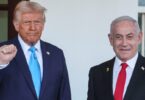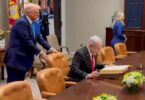The Bank for International Services (BIS) have launched what they call “Project Icebreaker,” a new pilot system that will help central banks and investors trade and complete transactions by making cross-border payments with country’s central bank digital currencies.
The project was released in March, collaborating with Bank of Israel, Norges Bank (Norway), and Sveriges Riksbank (Sweden).
BIS has already been trialing cross-border CBDC transactions since last year, The WinePress reported.
BIS explains more about Project Icebreaker, what it’s for and how it works, in a press release and accompanying video:
Project Icebreaker explores a specific way to interlink rCBDC systems (the hub-and-spoke solution) with several additional features that would allow the Icebreaker model to be readily scaled up. In addition, these features would promote simplicity and interoperability, reduce settlement risk, and foster competition and transparency for cross-border rCBDC payments.
Settlement risk and speed. In the Icebreaker model, a cross-border transaction is broken up into two domestic payments, one in each domestic system. An rCBDC therefore never leaves its own domestic system. This is because foreign exchange (FX) providers buy one currency in one system and sell the other currency in the other system. Settlement is via a coordinated payment-versus-payment (PvP) arrangement using Hash Time Locked Contracts (HTLC), going a long way towards eliminating counterparty risk in the FX transaction.
Competition and transparency. FX providers submit FX rates to the Icebreaker hub, which selects the best rate to be presented to the payer for each payment request. This lets the payer access competitive FX rates independently of the PSP providing the end user with a digital rCBDC-supporting wallet. Additionally, the dependency on liquidity in the desired bilateral currency pair is mitigated by automated use of bridge currencies.
Interoperability and scalability. The number of connections between rCBDC systems are kept to a minimum by the hub-and-spoke approach. The Icebreaker hub only routes payment messages and does not act upon them. The only information it acts upon is the data from FX providers, which are used when identifying and selecting the best FX rates for the payer.
The Icebreaker model makes a minimal set of technical requirements about the rCBDC systems that connect to it. Project Icebreaker shows that central banks can have almost full autonomy when designing their domestic rCBDC system while still being able to participate in a formalised interlinking arrangement to enable cross-border payments
Project Icebreaker is unique in its proposition. It first allows central banks to have almost full autonomy in designing a domestic retail CBDC. Then it provides a model for that same CBDC to be used for international payments.
Cecilia Skingsley, Head of the BIS Innovation Hub, said
Andrew Abir, Deputy Governor, Bank of Israel, said
If Israel is to issue a digital shekel, it would be very important that we do it according to the evolving global standards, so that Israelis could use it also for efficient and accessible cross border payments. While there is still much work ahead of us for the Icebreaker model to become a global standard, the learnings from this successful project have been very important for us and for the central banking community.
AUTHOR COMMENTARY
For further insight, Brandon Smith via Alt-Market commented:
Consider this, however – What if all monetary transactions were centralized through CBDCs and the BIS controlled the hub in which all retail CBDCs are exchanged globally? This is what Icebreaker is.
Now imagine that you operate a business that relies on overseas transactions; say you need to pay manufacturers in Vietnam or Taiwan to produce your products. With CBDCs in place you will most likely be completely dependent on a system similar to the Icebreaker Hub to move than digital money to Vietnamese banks and into the accounts of your manufacturers. Say officials at the BIS, for whatever reason, decide they don’t like you and they initiate Russian-style sanctions denying your access to the hub. Your business is now dead.
What if you had to meet certain standards in order to be allowed use of the hub, and the BIS dictates the standards? What if the BIS decides that your company needs to meet woke ESG related categories before you can get permission for Icebreaker transactions? Now the BIS has the ability to manipulate social and cultural trends using your business and millions of other businesses as forced messengers.
For the average consumer that does most of their transactions within their home country this might not sound like a big deal. But, for the business world, a SWIFT-like hub for retail CBDCs could be used to dominate all international trade. Running any kind of larger organization or company would mean bowing to the whims of the BIS.
Smith wrote
Just a few days ago I also wrote about how the International Monetary (Mafia) Fund (IMF) has endorsed a new system called the “Unicoin Network,” where nation’s CBDCs would get translated into a new singular CBDC called “Unicoin.”
While I have no idea what systems will be chosen or merged with perhaps, I do know that an even grander hub to facilitate CBDCs are on the way, and people really need to start paying attention so they can get themselves on the right side of this; because a CBDC is the end of freedom and liberty.
Ultimately, it is another stop towards the mark of the beast.
[16] And he causeth all, both small and great, rich and poor, free and bond, to receive a mark in their right hand, or in their foreheads: [17] And that no man might buy or sell, save he that had the mark, or the name of the beast, or the number of his name. [18] Here is wisdom. Let him that hath understanding count the number of the beast: for it is the number of a man; and his number is Six hundred threescore and six. Revelation 13:16-18
[7] Who goeth a warfare any time at his own charges? who planteth a vineyard, and eateth not of the fruit thereof? or who feedeth a flock, and eateth not of the milk of the flock? [8] Say I these things as a man? or saith not the law the same also? [9] For it is written in the law of Moses, Thou shalt not muzzle the mouth of the ox that treadeth out the corn. Doth God take care for oxen? [10] Or saith he it altogether for our sakes? For our sakes, no doubt, this is written: that he that ploweth should plow in hope; and that he that thresheth in hope should be partaker of his hope. (1 Corinthians 9:7-10).
The WinePress needs your support! If God has laid it on your heart to want to contribute, please prayerfully consider donating to this ministry. If you cannot gift a monetary donation, then please donate your fervent prayers to keep this ministry going! Thank you and may God bless you.







